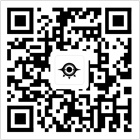
25
2022
-
02
Fire effect basic texture, fire material texture production
Author:
Flame special effects are a type with a relatively high appearance rate in game scenes and skills. The flame special effects in the scene are used to make bonfires, lights or strange flames in some cemeteries; among the skills, there are fireball release and attack effects.
Special effect principle analysis:
To make a flame, you need to understand the dynamics of the flame, the flame center generates internal and external flames, high brightness and high heat, the shape of the flame is randomly sprayed, the texture area gradually decays, the black smoke and residue fly around when burning, and there are small sparks for decoration, etc. Next, start learning from the fire material texture production.
Fire material texture production
Let's make the base texture of the flame first. Since there are many material libraries for special effects textures on the Internet, students who have the conditions can download them in major CG forums. Here is a method for making flame texture materials without a material library.
Open Photoshop (the version used by the editor is CS6), use the shortcut key Ctrl+N to create a new blank pattern with a height and width of 512 pixels.
After creating a new pattern, use the shortcut key D to reset the color table to black for the foreground and white for the background. Use the shortcut key Alt+Delete to fill the current layer with the foreground color - black, and the entire layer is filled with black as the texture background.
Find the "Layer" panel on the lower right side of the editing window, click the "New Layer" button in the lower toolbar, create a new blank layer, and a blank layer appears on the black background layer. Select this new layer 1 to start texturing.
Use the shortcut key Alt+Delete to fill the new layer with black, find the "Filter" menu in the Photoshop menu bar, and select "Layered Clouds" in the "Rendering" category.
The entire image is turned into a black and white noise texture. Then select the eraser tool in the left toolbar and set the opacity to 50% above the editing window. Use the eraser tool in the layer to trim the noise texture, and finally trim it to the style shown in the picture or a similar style. This is the base texture for the flame. It is recommended that students who are not good at painting should go to the CG forum to find ready-made flame textures for the following production. Those who are patient and want to learn hand-painted textures can try to draw textures by themselves.
Click the Photoshop "File" menu, save the texture image as a TGA format file, check the save channel, and select 32-bit format storage (24-bit will not save the alpha channel). The basic flame texture is done. Next, you need to add a texture overlay to this basic flame map. It is recommended to search for some flame texture patterns in various CG forums on the Internet.
Related News



